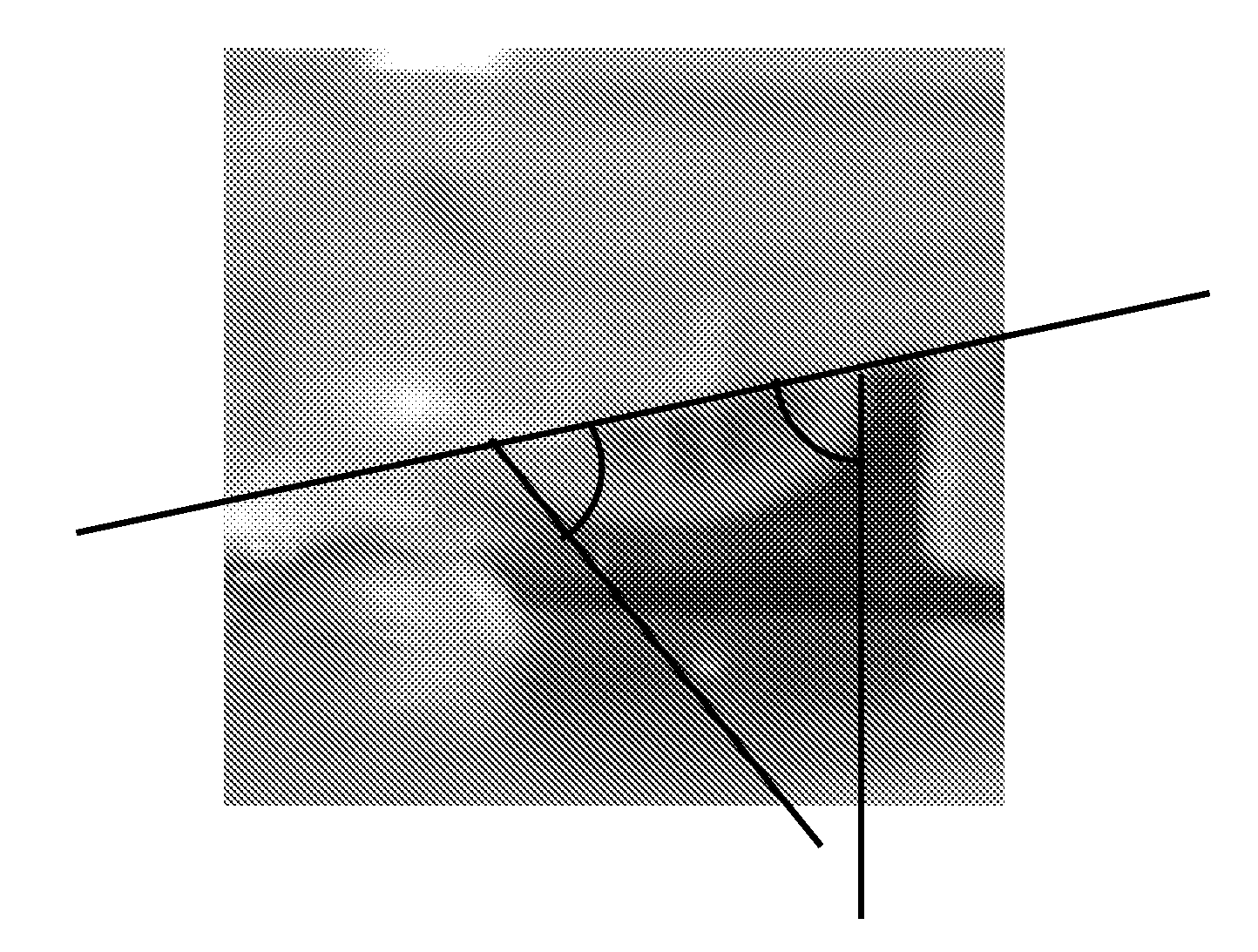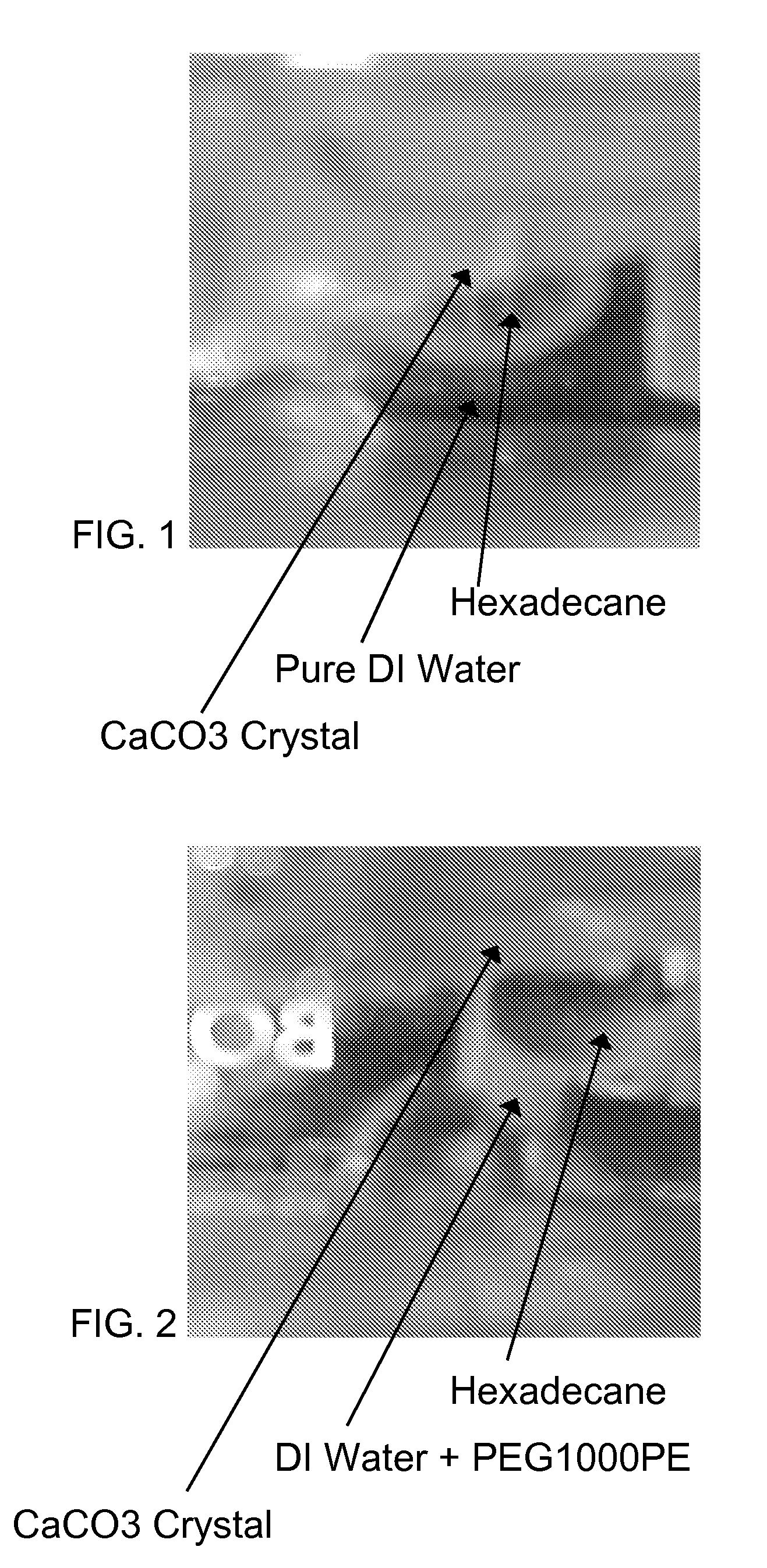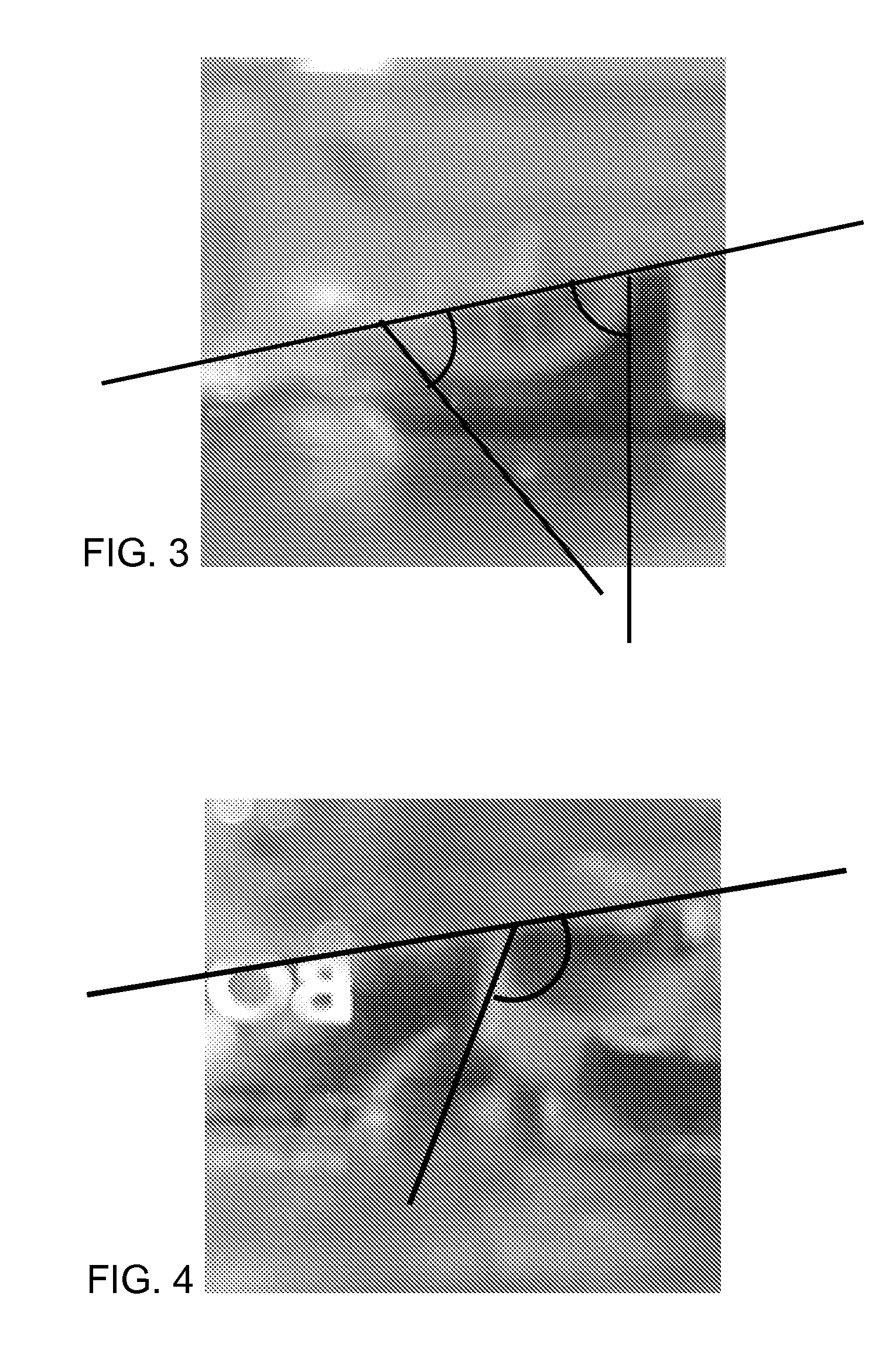Method for recovering crude oil from a subterranean formation
a technology of subterranean formations and crude oil, which is applied in the direction of detergent compounding agents, wellbore/well accessories, sealing/packing, etc., can solve the problems of unsatisfactory hydrophobic properties of such materials, and achieve the effects of reducing interfacial forces, enhancing oil recovery, and increasing formation permeability
- Summary
- Abstract
- Description
- Claims
- Application Information
AI Technical Summary
Benefits of technology
Problems solved by technology
Method used
Image
Examples
examples
[0191]FIG. 1 shows a droplet of hexadecane under pure deionized water on CaCO3 crystal. FIG. 3 is FIG. 1 labeled to show the contact angle. FIG. 3 shows the contact angle was 60°-80°.
[0192]FIG. 2 shows a droplet of hexadecane under 1 wt. % PEG 1000 phosphate ester at pH of 10 in water on CaCO3 crystal pretreated with PEG1000 phosphate ester. This shows the adsorption of PEG1000 phosphate ester onto the CaCO3 crystal increases the contact angle of hexadecane on CaCO3 under water. The pretreatment of calcium carbonate crystal was done by immersing the crystal in an aqueous solution of e.g. PEG1000 phosphate ester (e.g. 1 wt %, pH 6-7). A successful adsorption onto the crystal and a respective change of the surface properties is shown by measuring the contact angle of hexadecane under water. FIG. 4 is FIG. 2 labeled to show the contact angle. FIG. 4 shows the contact angle was >130°.
[0193]Comparison of FIGS. 3 and 4 shows the adsorption of PEG1000 phosphate ester onto the CaCO3 crystal...
PUM
 Login to View More
Login to View More Abstract
Description
Claims
Application Information
 Login to View More
Login to View More - R&D
- Intellectual Property
- Life Sciences
- Materials
- Tech Scout
- Unparalleled Data Quality
- Higher Quality Content
- 60% Fewer Hallucinations
Browse by: Latest US Patents, China's latest patents, Technical Efficacy Thesaurus, Application Domain, Technology Topic, Popular Technical Reports.
© 2025 PatSnap. All rights reserved.Legal|Privacy policy|Modern Slavery Act Transparency Statement|Sitemap|About US| Contact US: help@patsnap.com



